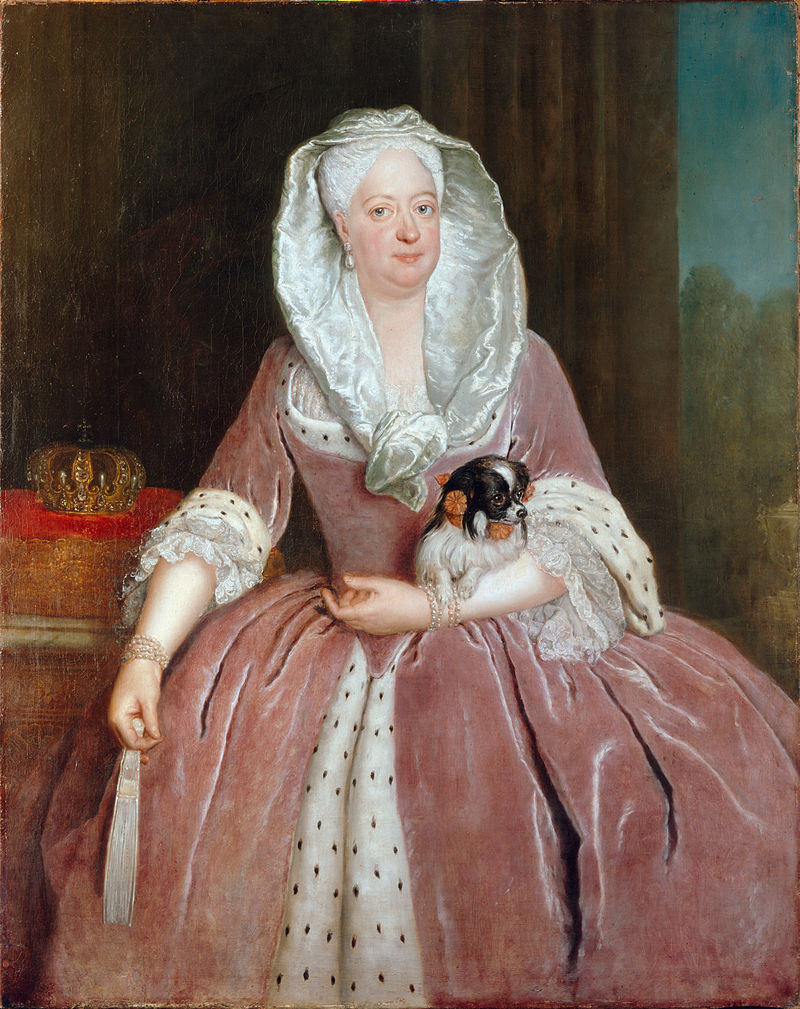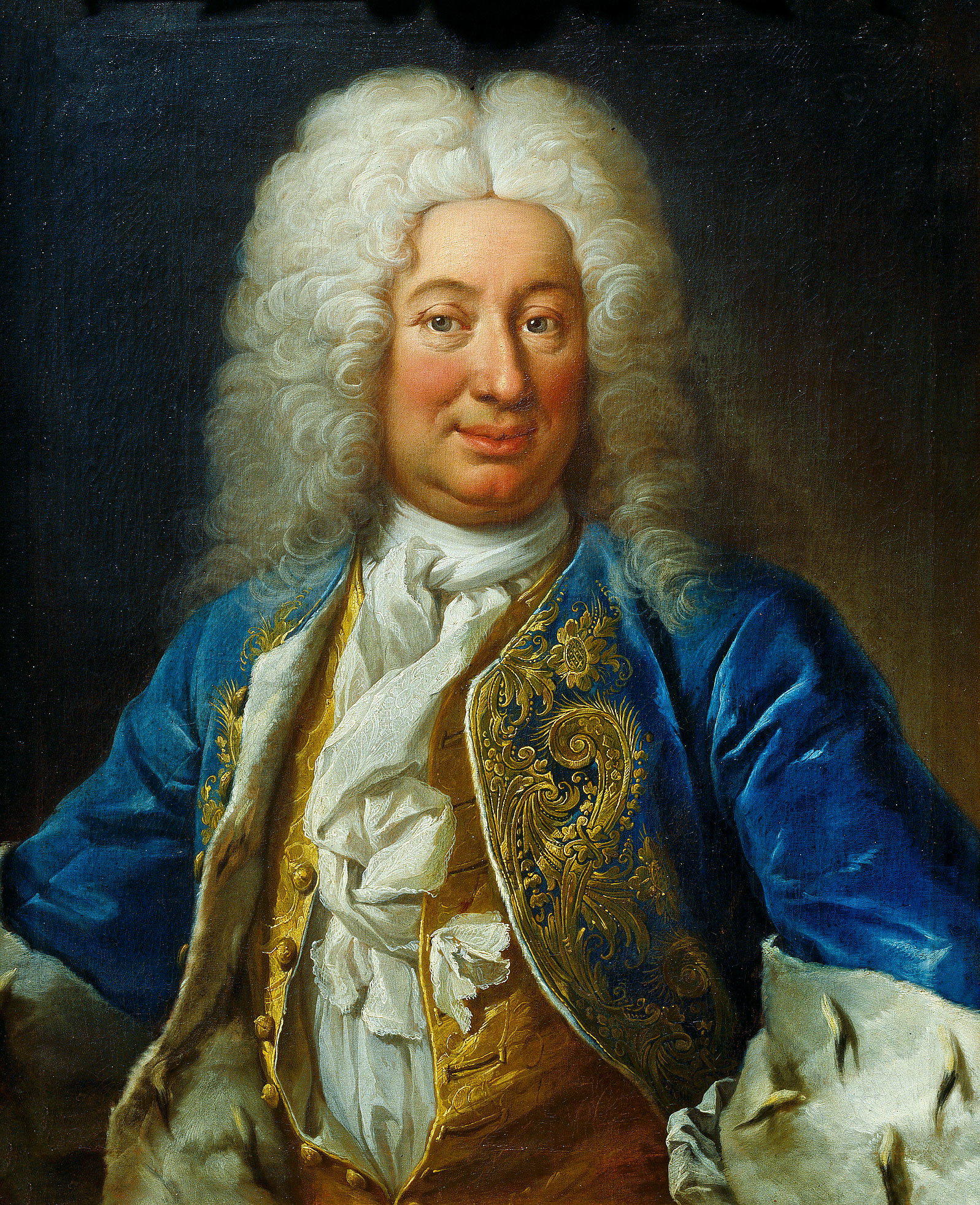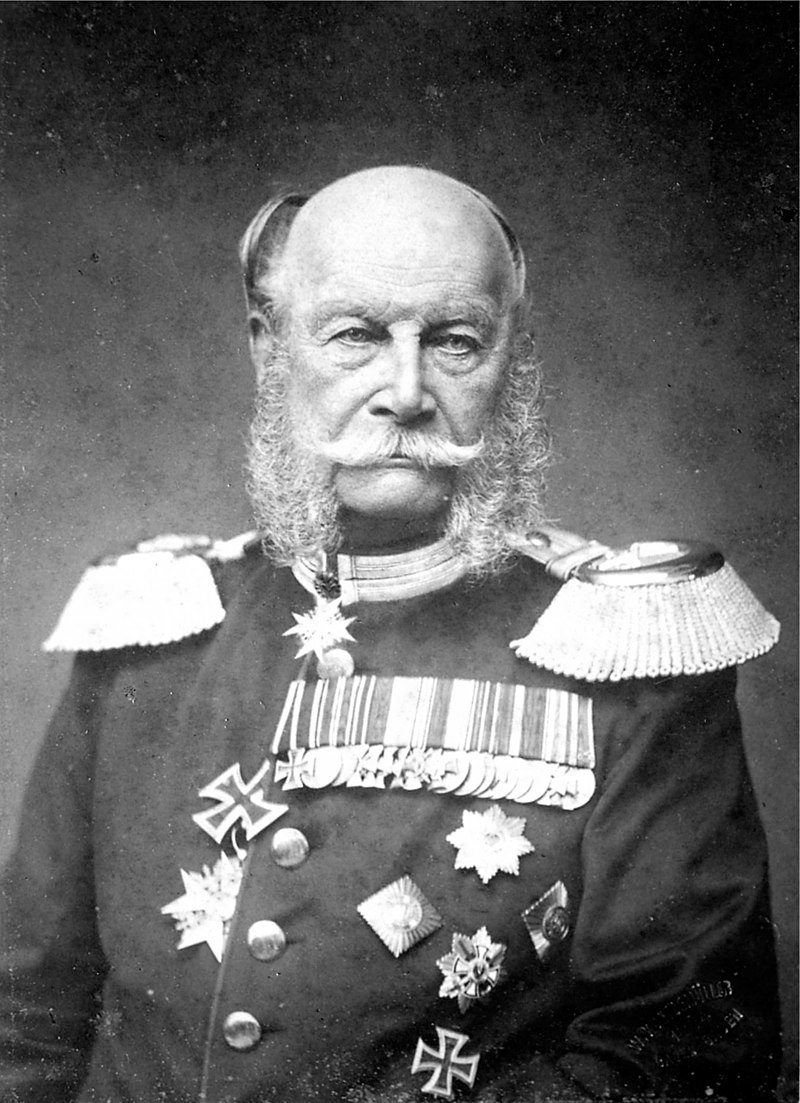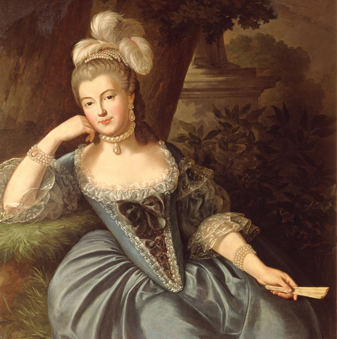© Unofficial Royalty 2025

Marguerite de Valois, Queen of France; Credit – Wikipedia
March 27, 1482 – Death of Mary, Duchess of Burgundy (in her own right) at Wijnendale Castle, Flanders, now in the Netherlands, after falling from her horse; buried in the Church of Our Lady in Bruges, now in Belgium
Mary married Archduke Maximilian of Austria from the Habsburg dynasty, who became Holy Roman Emperor Maximilian I after her death. Their son Philip the Handsome succeeded his mother as Philip IV, Duke of Burgundy, and became King Philip I of Castile through his marriage to Queen Joanna of Castile and Aragon, the daughter of Queen Isabella I of Castile and King Ferdinand II of Aragon. Mary’s lands eventually became part of the Habsburg Empire. Despite being pregnant, Mary participated in a hunt in the woods near Wijnendale Castle in Flanders, Duchy of Burgundy, now in Belgium. Mary was an experienced rider, holding her falcon in one hand and the reins in the other. However, her horse stumbled over a tree stump while jumping over a newly dug canal. The saddle belt under the horse’s belly broke, causing Mary to fall out of the saddle and into the canal with the horse on top of her. Mary was seriously injured and died several weeks later from internal injuries.
Unofficial Royalty: Mary, Duchess of Burgundy, Archduchess of Austria
March 27, 1615 – Death of Marguerite de Valois, Queen of France, daughter of King Henri II of France, first wife of King Henri IV of France, at the Château de Saint-Germain-en-Laye in France; buried at the Basilica of Saint-Denis near Paris, France
Marguerite was the daughter of King Henri II of France and Catherine de’ Medici. In 1572, Marguerite married King Henri III of Navarre, later King Henri IV of France, the first king of the House of Bourbon. Just days after the wedding, the St. Bartholomew’s Day massacre, in which thousands of French Protestant Huguenots were killed, took place. Marguerite is alleged to have hidden several prominent Huguenots, as well as her new husband, to keep them safe from certain death. When her brother, King Henri III, died without an heir, the throne passed to Marguerite’s husband, the senior agnatic heir of King Louis IX of France. Henri IV needed a male heir, and his marriage to Marguerite had produced no children. He began negotiations with Marguerite to have their marriage annulled. After several years, the marriage was formally dissolved in 1599. Marguerite retained her title as Queen of France. She died on March 27, 1615, aged 61.
Unofficial Royalty: Marguerite de Valois, Queen of France
March 27, 1625 – Death of King James I of England/James VI, King of Scots at Theobold’s Park in Hertfordshire, England; buried at Westminster Abbey in London, England
When James was 11 months old, Protestant rebels arrested his Catholic mother, Mary, Queen of Scots, and forced her to abdicate in favor of her son James who reigned as James VI, King of Scots. James’ parents, Mary, Queen of Scots and Henry Stewart, Lord Darnley, were both grandchildren of Margaret Tudor, daughter of King Henry VII of England and sister of King Henry VIII of England, therefore, James had a claim on the English throne. Since none of the children of Henry VIII had children, James was the senior heir of Henry VII through his eldest daughter Margaret Tudor. In 1589, James married Anne of Denmark. They had seven children, but only three survived childhood, including King Charles I of England and Elizabeth, whose daughter Sophia of Hanover became heiress presumptive to the British throne under the Act of Settlement 1701. Sophia’s son was King George I of Great Britain. On her deathbed, Queen Elizabeth I gave her assent that James should succeed her. In March 1625, James became ill with a recurring fever and then suffered a stroke. He died on March 27, 1625, aged 58.
Unofficial Royalty: King James I of England
March 27, 1714 – Death of Charlotte Amalie of Hesse-Kassel, Queen of Denmark and Norway, wife of King Christian V of Denmark and Norway, at Charlottenborg Palace in Copenhagen, Denmark; buried at Roskilde Cathedral in Roskilde, Denmark
In 1667, Charlotte Amalie married the future King Christian V of Denmark and Norway, and the couple had seven children. Charlotte Amalie’s husband succeeded his father in 1670. During King Christian V’s reign, colonies were established in the Caribbean. The islands of Saint Thomas, Saint John, Saint Croix, and Water Island were originally a Danish colonies, the Danish West Indies. The city of Charlotte Amalie, on the island of St. Thomas, was named after Christian V’s wife. Denmark sold the islands to the United States in 1917 and now they are known as the United States Virgin Islands, and Charlotte Amalie is now the capital. King Christian V died in 1699 and was succeeded by his son King Frederik IV. On March 27, 1714, Charlotte Amalie, Queen of Denmark and Norway, aged 63, died of scarlet fever after being ill for six days.
Unofficial Royalty: Charlotte Amalie of Hesse-Kassel, Queen of Denmark and Norway
March 27, 1785 – Birth of Louis-Charles, Dauphin of France, titular King Louis XVII of France, son of King Louis XVI of France and pretender to the throne after his father’s execution, at the Palace of Versailles in France
Full name: Louis-Charles
Born in splendor at the Palace of Versailles, Louis-Charles died from tuberculosis at the age of ten, imprisoned at the Temple, the remains of a medieval fortress in Paris, after seeing his father Louis XVI, his mother Marie Antoinette, and his aunt Elisabeth led off to be beheaded. Of all the royal prisoners in the Temple, Louis-Charles’ sister Marie-Thérèse was the only one to survive.
Unofficial Royalty: Louis-Charles, Dauphin of France – Titular King Louis XVII of France
March 27, 1837 – Death of Maria Fitzherbert, mistress and morganatic wife of King George IV of the United Kingdom, at her home Steine House in Brighton, England; buried at the Church of St. John the Baptist in Brighton, England
Maria Fitzherbert was the mistress of The Prince of Wales (later King George IV of the United Kingdom) from 1784 until 1794 and again from 1798 until 1807. The couple married secretly in 1785, however, the marriage was not considered legal as it had not received the approval of the Sovereign as required under the Royal Marriages Act. The Prince became King George IV in 1820, and during his 10-year reign, the two only saw each other occasionally in social settings, but both remained in each other’s thoughts. When George died in June 1830, he was succeeded by his brother. The new King William IV was always very gracious and welcoming toward Maria and continued to provide her annual pension. King William IV reportedly offered her a dukedom, but she declined. Maria did ask his permission to dress in widow’s weeds and to allow her servants to dress in royal livery, both of which the King quickly agreed to. Maria outlived George IV by nearly seven years, dying on March 27, 1837, aged 80.
Unofficial Royalty: Maria Fitzherbert, mistress and morganatic wife of King George IV of the United Kingdom
March 27, 1854 – Assassination of Carlo III, Duke of Parma in Parma, Duchy of Parma, now in Italy; buried at the Chapel of the Villa Borbone now in Viareggio, Italy
Carlo’s father was in financial difficulty, so he decided to marry his son to a princess with a large dowry. The chosen bride was Louise Marie Therese of France, the granddaughter of King Charles X of France. Carlo and Louise Therese Marie were married in 1847 and had four children. Carlo became Duke of Parma upon the abdication in 1849 of his very unpopular father Carlo II Ludovico. Carlo III, Duke of Parma reigned for only five years and was assassinated for his authoritarian policies. His six-year-old son Roberto became Duke of Parma with his mother as regent, but he had a short reign. In 1859, the Duchy of Parma was abolished during the Italian unification movement. It was merged with the Kingdom of Sardinia as part of the unification of Italy. In 1861, Vittorio Emanuele II, King of Sardinia was proclaimed the first King of the new, united Kingdom of Italy.
Unofficial Royalty: Carlo III, Duke of Parma
March 27, 1879 – Death of Prince Waldemar of Prussia, grandson of Queen Victoria, at the Neues Palais in Potsdam, Kingdom of Prussia, now in Brandenburg, Germany; originally buried at Friedenskirche in Potsdam, the remains of Waldemar and his brother Sigismund were later transferred to the Kaiser Friedrich Mausoleum at the Friedenskirche where their parents were buried.
Prince Waldemar was the son of Victoria, Princess Royal and Friedrich III, German Emperor. His birth came 20 months after the tragic death of his 21-month-old brother Sigismund from meningitis. Waldemar quickly took the place of his mother’s favorite son, previously held by his deceased brother Sigismund. Vicky hoped Waldemar would be everything that his elder brothers Wilhelm and Heinrich were not. Sadly, Waldemar died of diphtheria at age 11, three months after his maternal aunt Princess Alice and her daughter Princess May died from the same disease. A favorite royal story involved Waldemar: When Waldemar’s family was visiting his grandmother Queen Victoria, she was working on some papers in her room. She looked up and saw a small crocodile staring at her. Naturally, she screamed and all within hearing came running. Waldemar had let Bob, his pet crocodile, out of his box. In fits of laughter, Waldemar retrieved his crocodile, and order was restored.
Unofficial Royalty: Prince Waldemar of Prussia
March 27, 1883 – Death of John Brown, personal attendant and favorite of Queen Victoria of the United Kingdom, at Windsor Castle in Windsor, England; buried in the cemetery at Crathie Kirk near Balmoral in Scotland
John Brown served Queen Victoria of the United Kingdom as a ghillie at Balmoral (Scottish outdoor servant) from 1849 – 1861 and a personal attendant from 1861 – 1883. Prince Albert’s untimely death in 1861 was a shock from which Queen Victoria never fully recovered. In 1864, Victoria’s personal physician, Sir William Jenner, ordered that she ride all winter. Victoria refused to be accompanied by a stranger, so John Brown was summoned to Osborne House on the Isle of Wight with Victoria’s Highland pony. His duties soon encompassed more than leading a horse. Brown became known as “the Queen’s Highland Servant,” who took his orders exclusively from the Queen. From then on, until his death nearly twenty years later, Brown was never far from Victoria’s side. There were rumors of a romance and a secret marriage, and Victoria was called Mrs. Brown. Brown treated the queen in a rough and familiar but kind manner, which she relished. In return, Brown was allowed many privileges, infuriating Victoria’s family. In March 1883, John Brown worked seven-day weeks despite having a fever and chills. On March 27, 1883, at Windsor Castle, 56-year-old John Brown fell into a coma and died. The cause of death was erysipelas, a streptococcal infection. He was buried in the cemetery at Crathie Kirk near Balmoral, next to his parents and some of his siblings. The inscription on his gravestone shows the affection between him and Queen Victoria.
Unofficial Royalty: John Brown, Personal Attendant and Favorite of Queen Victoria of the United Kingdom
March 27, 2023 – Birth of Prince François of Luxembourg, son of Hereditary Grand Duke Guillaume of Luxembourg, at the Grand Duchess Charlotte Maternity Hospital in Luxembourg City, Luxembourg
François is the second of the two sons of Prince Guillaume, Hereditary Grand Duke of Luxembourg, and is third in the line of succession to the throne of Luxembourg after his father and his elder brother.
Unofficial Royalty: Prince François of Luxembourg
This article is the intellectual property of Unofficial Royalty and is NOT TO BE COPIED, EDITED, OR POSTED IN ANY FORM ON ANOTHER WEBSITE under any circumstances. It is permissible to use a link that directs to Unofficial Royalty.









